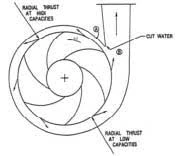Mobile:+86-311-808-126-83
Email:info@ydcastings.com
160mm end cap
Understanding the 160mm End Cap Its Importance and Applications
The 160mm end cap is a vital component used in various applications, especially in plumbing, manufacturing, and construction. Designed to secure the ends of pipes or tubes, this end cap plays a crucial role in preventing leakage and ensuring the integrity of a system. While it might seem like a simple part, its significance cannot be overstated.
What is a 160mm End Cap?
An end cap is essentially a type of fitting that is used to seal the open end of a pipe, which in the case of a 160mm end cap, refers specifically to pipes with a nominal diameter of 160mm. These caps can be made from various materials including plastic, metal, and rubber, depending on the specific needs of the application. The choice of material is important as it affects the durability, resistance to corrosive substances, and overall performance of the cap in given conditions.
Applications of 160mm End Caps
1. Plumbing Systems One of the most common applications for 160mm end caps is in plumbing systems. They are used to terminate pipelines that carry water, gas, or other fluids. In a plumbing setup, the end caps can prevent backflow and avoid contamination, ensuring that only clean and safe water enters a building's supply system.
2. Industrial and Manufacturing Uses In industrial settings, 160mm end caps are used in various machinery and equipment that require secure and airtight seals. These caps can be found in exhaust systems, HVAC units, and even in the manufacturing of products where pipe systems are integral to the process.
3. Construction During construction, particularly in civil engineering projects, end caps are essential for sewer and drainage systems. They are used to seal the ends of pipe segments to prevent debris, soil, or any unwanted materials from entering the pipe network.
4. Agricultural Use In agriculture, these end caps are often utilized in irrigation systems. By sealing the ends of irrigation pipes, they help maintain the pressure required for effective water distribution, ensuring optimal hydration of crops and efficient use of resources.
160mm end cap

Installing a 160mm End Cap
Installing a 160mm end cap requires careful attention to detail. First, the pipe must be cut to the appropriate length and the ends deburred to create a smooth surface for proper sealing. Depending on the type of material used for the cap, different methods may be employed for sealing it—such as welding for metal caps or adhesives for plastic options. It is crucial to follow manufacturer guidelines to ensure a secure fit that can withstand pressure and prevent leaks.
Benefits of Using 160mm End Caps
1. Prevent Leakage The primary purpose of any end cap is to ensure that there are no leaks at the ends of pipes. This is vital in preserving system integrity and efficiency.
2. Versatility Available in various materials, 160mm end caps can be adapted to numerous applications across different industries.
3. Ease of Installation These caps can generally be installed quickly and easily, making them a cost-effective choice for many projects.
4. Durability With the right material choice, end caps can provide long-lasting solutions that can withstand environmental stressors such as temperature changes and chemical exposure.
Conclusion
The 160mm end cap might appear to be a mere accessory in the larger engineering puzzle, but its role is indispensable. Whether in plumbing, industrial applications, construction, or agriculture, these caps provide essential sealing solutions that promote safety and efficiency. As industries evolve and rely more heavily on reliable systems, components like the 160mm end cap will continue to be critical in ensuring seamless operations. Understanding their importance enables professionals in various fields to make informed decisions about their applications, leading to improved performance and longevity of their systems.
-
Why Should You Invest in Superior Pump Castings for Your Equipment?NewsJun.09,2025
-
Unlock Performance Potential with Stainless Impellers and Aluminum End CapsNewsJun.09,2025
-
Revolutionize Your Machinery with Superior Cast Iron and Aluminum ComponentsNewsJun.09,2025
-
Revolutionize Fluid Dynamics with Premium Pump ComponentsNewsJun.09,2025
-
Optimizing Industrial Systems with Essential Valve ComponentsNewsJun.09,2025
-
Elevate Grid Efficiency with High-Precision Power CastingsNewsJun.09,2025











